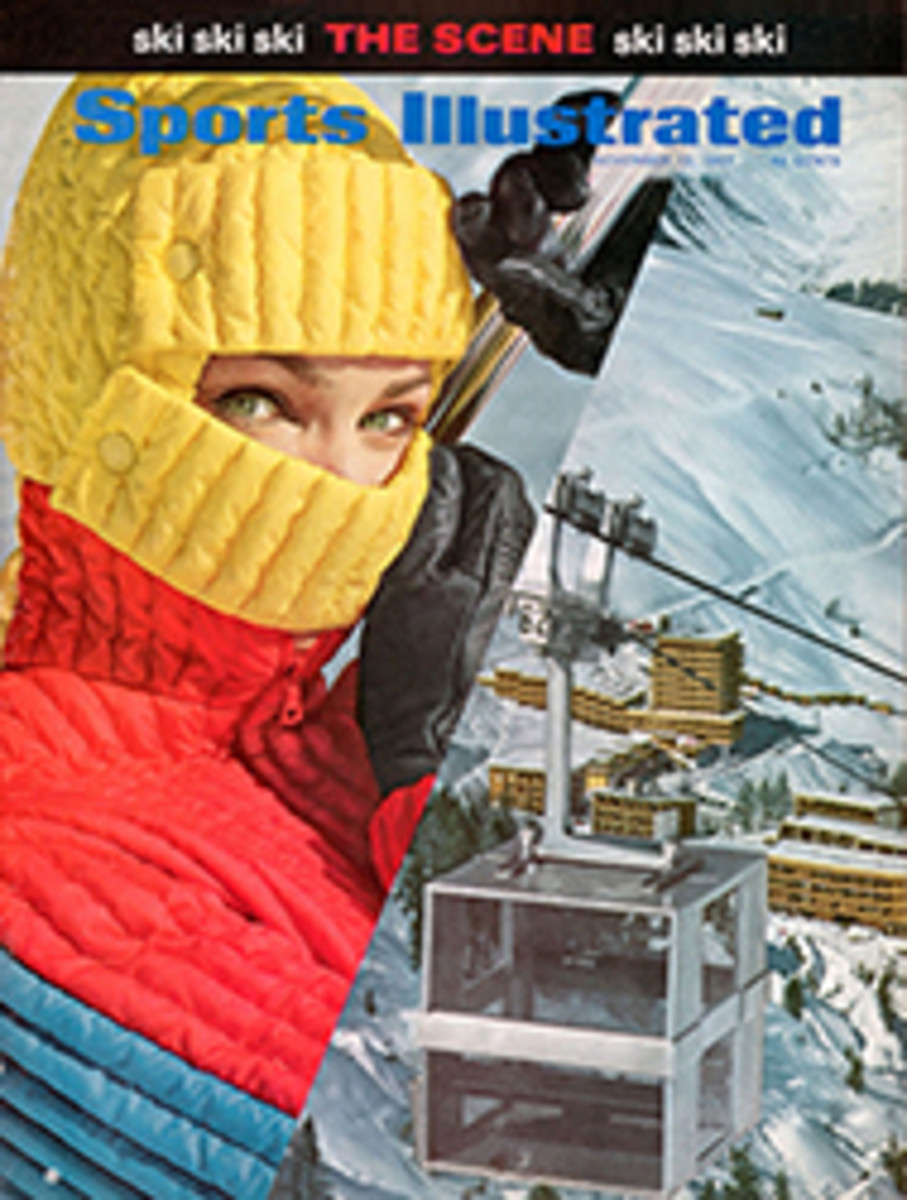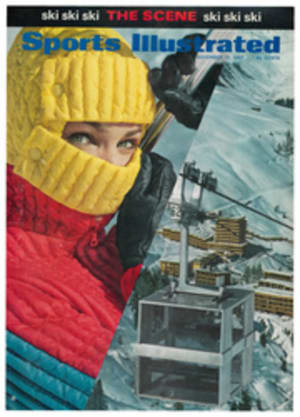
The Glamorous Galloping Gaels of St. Mary's
It is 1936 and a string of 18 Pullman and baggage cars is moving slowly eastward out of California's Moraga Valley. Were we to peep into one of the Pullmans, we might feel for a moment that we were snooping on a musical film stage with dances by Busby Berkeley. True, Dick Powell cannot actually be seen singing to a coed, nor is Jack Oakie readily apparent, but their presence is somehow felt. If an assistant director sould come by and if we were to ask him, he would tell us that this is no movie, it is simply the football team of tiny St. Mary's College setting forth once again to lay siege to another famed citadel of football and Catholicism.
St. Mary's players, though bulky enough themselves, make up only a fraction of the expeditionary force. They are accompanied by more than 200 singing, swinging businessmen, shopkeepers, secretaries and other camp followers, described as loyal fans of St. Mary's and its high-pressure coach, Edward Patrick (Slip) Madigan.
Before the introduction of regular commercial planes between California and New York, the cross-country journey consumed about four days. In addition to its sleeping, dining and reveling facilities, therefore, the St. Mary's Special contained a "gym car" equipped with rubdown tables, exercise mats, bucking machines for the linemen's use and a battery of showers.
For the latter purpose, the gym car carried its own supply of water, a commodity one was not likely to find anywhere else on the train. Madigan, the perfect host, had provided his Pullman alumni with all the trappings of an American Legion convention to beguile the tedium of an arduous journey.
At the other side of the continent, where St. Mary's was scheduled to play Ford ham in the Polo Grounds, New Yorkers followed the party's progress. Wherever the train stopped, as it did in Chicago to give the players a chance to work out on the turf at Soldier Field, bulletins were flashed to New York. This "hard news" supplemented the press releases dispatched earlier by Madigan and his imaginative press agents.
Though St. Mary's College antedated Madigan, its existence had been a well-kept secret until Slip arrived. Fewer than 100 students were enrolled there in 1920 when its football team earned a small measure of notice by losing to the University of California 127-0. The following autumn the Christian Brothers who ran the school hired Madigan to help spare it such unwanted publicity.
Slip, who had played center under Knute Rockne at Notre Dame, was a large, cocky Irishman with a booming voice and a louder wardrobe. He set to work assembling husky young men to preserve the school's honor and a sufficient number of uniforms to clothe them. Since football players came cheaper than uniforms in those days, Madigan spent much of his early years buying up secondhand jerseys and repairing damaged cleats.
Within a year his team went down with all flags flying before powerful California 21-0. A year or two later, the frequency with which it was upsetting its better-known rivals gained St. Mary's the reputation of a "giant killer." By that time Madigan had dubbed his team "the Galloping Gaels," though his failure to secure many genuine Gaels prompted verses like these from Sports-writer George Phair:
The Harp that hangs in Tara's Halls
Sings out in accents rich,
As Herman Meister throws the ball
To Luben Popovich.
As increasing gate receipts enriched St. Mary's treasury, the school moved out of its dingy building in Oakland and found a bright new campus in the Moraga Valley. At the same time, Madigan began to shun the dark plumage worn by conventional teams of that era in favor of the wildest colors in the rainbow. He experimented with tear-away jerseys as well as the T formation. Rival coaches also accused him of concocting the "forward fumble" to pick up vital yardage.
One of Madigan's most successful creations was a character named Tom Deegan, who was invariably pulled from Slip's teeming brain after one of his players had made a mistake. Deegan, Slip claimed, had been his teammate at Notre Dame, and a wonderful athlete he was. The Deegan way was the right way. "Deegan never would have muffed that one!" Madigan would bellow at an offending Gael. "Deegan would have gotten the ball—just stolen it like he did against Michigan—and run it back for a touchdown!"
"Remember Tom Deegan!" became the rallying cry in the dressing room and on the practice field at St. Mary's. Years afterward, when a Notre Dame alumnus overheard two St. Mary's players discussing the fabled Deegan, he drew Madigan aside.
"Say, Slip, did this Deegan really win any games for Notre Dame?" he asked.
"Nope," Madigan said, "but he's won a lot of them for St. Mary's."
In 1930 Madigan arranged to play Fordham annually in New York. St. Mary's president at first objected to the plan, fearing that the players would lose too much time from their classes. But Madigan argued persuasively that the many educational opportunities such a trip presented far outweighed the loss of class time.
By 1936 the St. Mary's-Fordham game had become a football attraction in New York second only to the Army-Notre Dame game. When the special train arrived there, its passengers whooping and hollering, Madigan dispatched his players to their rooms at the Westchester Country Club. Then he took himself and his followers to a massive "press party" at the Waldorf. Although many of the team's ardent rooters missed seeing a football game because of what transpired at the party, Madigan made dozens of friends among both the press and those strangers who happened to wander in off the street.
There were 50,000 people in the Polo Grounds on the 1936 Saturday when the St. Mary's players, glittering in their red silk jerseys with white epaulets and their shiny green pants, rushed onto the field. Strolling proudly after them, no less resplendent, was Coach Madigan in a natty light suit, pink shirt and orange cravat.
By the end of the first period, Slip looked as rumpled as his players. Storming up and down the sidelines in his usual manner, ranting at the officials, pulling his hat down over his ears, he worked himself into a lather. At half time, the Fordham band formed a giant tolling bell on the field and played The Bells of St. Mary's. The hungover camp followers, sitting together in the upper stands, cheered wildly and rained confetti down on the sidelines.
Shortly after St. Mary's lost the game, 7-6, the special train pulled out of New York. In addition to memories of another lively visit to the Big Town, Madigan carried with him a check for $38,824.15. This sum, St. Mary's total share of the gate receipts for the Fordham game, was collected by Madigan because the college had fallen behind in paying him his share of receipts.
"I paid Mr. Madigan," Brother Albert, the president of St. Mary's, was to say during the college's subsequent financial difficulties, "because I recognized a just debt and I recognized that he had brought certain assets to St. Mary's."
Madigan's bright creation began to flicker a year later. St. Mary's was unable to meet the payments on its new campus and nearly fell into the hands of its bondholders (partly, it was said, because Madigan's salary and bonuses, as well as the team's travel expenses, considerably exceeded the gate receipts). The college was bailed out at length by the archdiocese.
Unable to carry out his educational ideas under the new directors, Madigan departed in 1940. He died last fall in Oakland. According to a line in the latest World Almanac, St. Mary's College has survived him.

